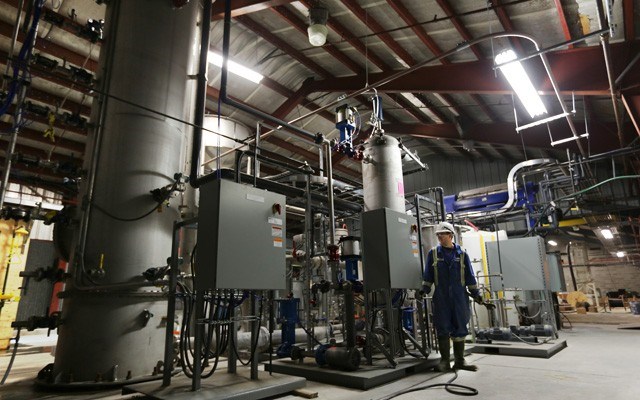A new technology is being tested in Squamish — and it's got some big name backers.
Among the names bankrolling Calgary-based Carbon Engineering's (CE) new test-plant in Squamish are Calgary Flames part-owner Murray Edwards and Microsoft's billionaire tech guru Bill Gates.
"We've got strategic-minded and deep-pocketed investors who I think really see the prospect of doing this long term, and really want to see more game-changing and disruptive technologies like what we're working on find their way into the marketplace," said Geoff Holmes, business development manager for CE.
What CE is working on is direct-air carbon capture — a technology that captures or "scrubs" carbon dioxide directly from ambient air.
"We were founded in 2009 with the sole focus of developing and commercializing technology to capture industrial-scale quantities of carbon dioxide (CO2) from the air," Holmes said.
"We think that's important, because obviously we have to drastically cut emissions if we want a stable climate."
The $9-million plant in Squamish is a pilot project, designed to research and fine-tune the technology before it's eventually ramped up.
"It captures about a tonne of CO2 from the air (per day) and then it lets it go again, so it's really just a test effort," Holmes said.
"It's about gathering engineering or performance data, really learning how the equipment and how the system overall performs in the real world so that we can integrate all that real-world know-how back into our engineering and designs for much larger-scale systems that can actually make a difference."
In the future, CE could build plants capable of capturing a million tonnes of CO2 per year, effectively neutralizing the emissions of about 250,000 cars annually.
The other aspect of the project that's got CE excited is the potential to produce carbon neutral, synthetic fuels that would "break the dependence on petroleum," Holmes said.
"Really what this does is open up the possibility of splitting water with renewable electricity to make hydrogen, which itself can be used as a fuel."
Naoko Ellis, a professor of chemical engineering with the University of British Columbia, said the project is exciting.
"If this succeeds and becomes the technology that it's promising, I think there is a lot of potential," she said.
"One of the pros about this is that it's not physically source-limited in the sense that you don't have to build it right next to let's say a power plant where you want to capture CO2. Because it's from air, they have a bit more flexibility in where it can be built."
The fact that the CE pilot plant was built in B.C. is encouraging in itself, Ellis said, and it fits nicely with the in-development Carbon Capture and Conversion Institute, of which Ellis has played a major role in bringing online.
"We're building a facility on Mitchell Island, and that will basically be able to bring in some new technologies for testing at a pilot scale," she said.
"We're hoping that this will be a very good test facility for those who perhaps have various other types of technologies to test out."
The institute is a partnership between academia, non-profit and industry, Ellis said.
"Internationally we do know a number of different test facilities, but it's quite unique in Canada," she said. "To have a brand-new facility where we have one tonne of CO2 availability a day, it's interesting."
From a CE perspective, the hope is that the pilot plant will grow into a world-changing industry.
"The grand vision is that this synthetic fuels approach is one of the few key ways that we power carbon neutral transportation in the 21st century," Holmes said.
"It kind of sits alongside electric, alongside hydrogen and alongside biofuels — those are the ways that we get transportation to carbon neutrality this century."




